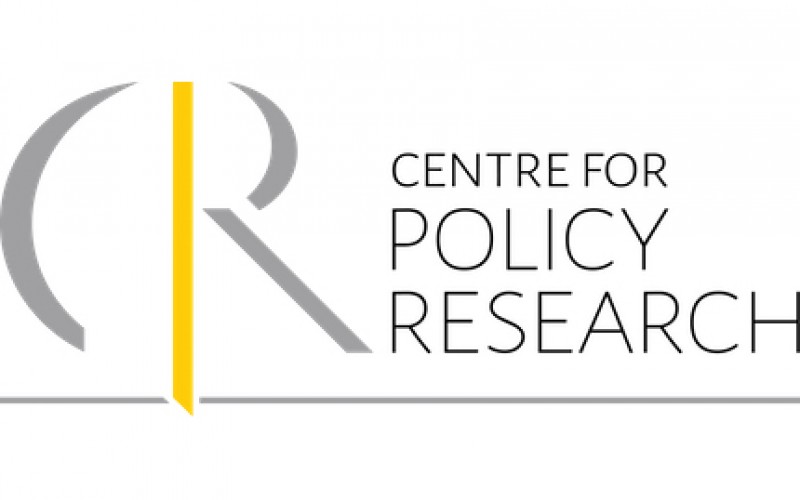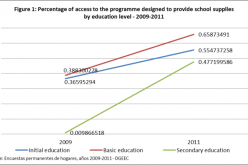Articulating & Operationalizing Differentiation in the 2015 Climate Agreement: A Roadmap for India in Paris

The following blog post originally appeared in CPR’s Climate Initiative Blog. For details, please click here.
A central defining issue in the Paris climate negotiations – indeed, one that Indian negotiators will likely lose considerable sleep over – is the nature and extent of differentiation that the 2015 agreement will contain. The principle of equity and common but differentiated responsibilities and respective capabilities (CBDRRC), the principled basis for differentiation in the climate regime, will need to be articulated thoughtfully and operationalized effectively to best serve India’s interests. This post seeks to provide a roadmap for how this might best be done.
Articulating CBDRRC
The principle of CBDRRC finds expression in the Framework Convention on Climate Change (FCCC), and is the basis of the burden-sharing arrangements crafted under the FCCC and its Kyoto Protocol. While Parties agree on the crucial relevance of the principle, there is little agreement on its core content – in particular whether responsibilities are differentiated on the basis of differing contributions to environmental harm, or merely due to differing capacities to address the problem. There are thus differing views on the applications this principle lends itself to, the nature of any obligations it entails, as well as the legal status and operational significance of the principle. Nevertheless, the CBDRRC principle is accepted by Parties as a fundamental part of the conceptual apparatus of the climate regime. This principle requires efforts from all states in service of the common environmental goal, and it countenances differentiation between states.
The articulation of the CBDRRC principle in the 2015 negotiations, however, is work in progress. The Durban Platform that launched the negotiating process towards the 2015 agreement, unusually so for the time, contained no reference to common but differentiated responsibilities and respective capabilities. [1] Developed countries had argued that references to ‘common but differentiated responsibilities’ must be qualified with a statement that this principle must be interpreted in the light of contemporary economic realities. Many developing countries, argued in response that this would be tantamount to amending the FCCC. The text was thus drafted such that this new agreement was to be ‘under the Convention’[2] thereby implicitly engaging its principles, including the principle of common but differentiated responsibilities. The Doha and Warsaw decisions in 2012 and 2013 contained a general reference to ‘principles’ of the Convention,[3] but no specific reference to the principle of common but differentiated responsibilities. The Lima Call for Climate Action of 2014 does contain an explicit reference to the CBDRRC principle, but it is qualified by the clause ‘in light of different national circumstances.’[4]This qualification – which represents a compromise arrived at between the US and China [5] – arguably represents a shift in the interpretation of the CBDRRC principle in its application to the 2015 agreement. The qualification of the principle by a reference to ‘national circumstances’ introduces a dynamic element to the interpretation of the principle. As national circumstances evolve, so too will the common but differentiated responsibilities of States.
This particular framing of the CBDRRC principle, with the qualification ‘in light of different national circumstances’ has now been accepted as the starting point for any articulation of the CBDRRC principle in the 2015 agreement. But it does not have to be the end point.
In relation to the articulation of this principle in the 2015 agreement, it is in India’s interests to do the following:
- Negotiate additional qualifying language that would respect the different development stages countries are at.
- Ensure that the language within which this principle is couched in the 2015 agreement is normative and prescriptive[6] rather than declarative.[7]
- Ensure that the articulation of the CBDDRC principle is buttressed with the recognition that social and economic development and poverty eradication are (overriding) priorities for developing countries.
- Ensure that the agreement, and the articulation of the CBDRRC principle, is situated squarely within the balance of responsibilities envisaged in the FCCC. This is best done, not by importing provisions of the Convention into the 2015 agreement, as India has done so far, but by crafting language in the preamble and/or objective of the agreement that recognizes that the entirety of the Convention and the agreement must be read, interpreted and operationalized in a mutually supportive manner.
Operationalizing CBDRRC
The operationalization of the CBDRRC principle in the 2015 agreement is perhaps even more consequential than its articulation. And, in this too, the 2015 negotiations appear to be ushering in a new era. The FCCC and the Kyoto Protocol operationalize the CBDRRC principle by requiring developed countries (alone) to assume ambitious greenhouse gas (GHG) mitigation targets. These instruments categorize Parties and tailor their commitments based on lists defined in their Annexes broadly differentiating between developed and developing countries. This form of differentiation has proven deeply controversial over the years, and the troubled waters the Kyoto Protocol has navigated in the last decade stand testimony to this. Although some Parties, such as the Like-minded Developing countries, [8] which include India, remain in favor of retaining this form of prescriptive differentiation for the 2015 agreement, a less prescriptive model of differentiation, rooted in sovereign autonomy, has gained ground in the negotiations.
The Warsaw decision invited parties to submit ‘intended nationally determined contributions’ in the context of the 2015 agreement.[9] Parties can determine the scope of these contributions (whether they will cover only mitigation or also adaptation and finance), their form (in relation to mitigation, for instance, whether absolute economy wide targets or intensity targets or other), their rigor, and the information that will accompany them. Despite some efforts at the Lima conference to circumscribe the extent of discretion Parties enjoy, Parties retain considerable discretion in relation to their contributions. In so far as Parties choose their own commitments and tailor these to their national circumstances, capacities and constraints, they differentiate themselves from every other nation. This form of differentiation has come to be characterized as self-differentiation, and is expected to form a fundamental building block of the 2015 agreement. Self-differentiation provides flexibility, privileges sovereign autonomy and encourages broader participation. However, it does not provide any assurance either that countries’ contributions will add up to what is adequate to address the problem or that countries will do their fair share based on their past and current responsibility for environmental harm.
While self-differentiation appears to be the starting point for the 2015 agreement, it does not have to be the end point. It is in this respect that India, among other developing countries can play a constructive role in Paris. There are various ways in which the self-serving nature of self-differentiation can be circumscribed. In relation to the operationalization of the CBDRRC principle, it is in India’s interests to do the following:
- Preserve differentiation – implicitly – across the agreement through considered deployment of the progression principle. The principle of progression, enshrined in the Lima Call for Climate Action, requires each country’s nationally determined contribution ‘to represent a progression beyond the current undertaking of that Party.’[10] This is also under discussion in the 2015 agreement. This provision is of tremendous significance as it has the potential to ensure that the regime as a whole is moving towards ever more ambitious and rigorous contributions from Parties – that there is a ‘direction of travel’ for the regime, as it were. It will also ensure there will be continuing differentiation in the near future, since developed and developing countries, given the current balance of responsibilities in the FCCC and Kyoto Protocol, are at different starting points. However in negotiating this principle in the 2015 agreement, India should ensure:
- That the principle of progression is applied not just to mitigation obligations but also to the obligations related to support (finance, technology and capacity building) so that if one is ratcheted up so is the other. This will both ensure comprehensive direction of travel as well as preserve differentiation across obligations.
- That the requirement to progress is attached to ‘current undertaking,’ as it is in the Lima decision. This will ensure that the differentiation represented in the Kyoto commitments (Annex-based) and Cancun pledges (between developed and developing countries) function as the starting point. India should guard against formulations that seek to re-set the starting points. This includes, for instance, a formulation that distinguishes between those that have undertaken economy wide efforts and those that have not, as this will re-draw the boundaries between the categories of Parties thus far recognized under the Convention. In this example, India and China who took on economy wide emissions intensity targets in Cancun would be in the same category as developed countries that took on economy wide absolute emission reduction targets.
- That the progression principle is crafted to allow countries like India discretion in ‘how’ they progress. Progression could be reflected in several ways. It could be demonstrated through more stringent numerical commitments of the same form, i.e. a decrease in emissions intensity from a base year over a previous intensity target, or an increase in absolute reductions over an earlier absolute reduction pledge. It could also be reflected in the form of commitments. For instance, Parties that have currently undertaken sectoral measures could be expected to take on economy wide emissions intensity or business as usual (BAU) deviation targets, those that currently have economy wide emissions intensity or BAU deviation targets could be expected to take on economy wide absolute emissions reduction targets. This broadly maps on to the Brazilian concentric differentiation proposal.[11]A narrow interpretation of progression based on the latter construction to the exclusion of the former would, from India’s perspective, be problematic, as undertaking economy wide absolute emissions reduction targets in the near future would very likely translate into clear constraints on its development. Given India cannot predict its development needs into the future, India needs to retain the discretion to determine how its future contributions will represent a progression on its current undertaking. India should thus ensure that the text on progression is not prescriptive in relation to ‘how’ progression (i.e. in form or rigor) is determined. The text should also remain ambiguous on ‘who’ determines progression, as progression will then be self-determined.
- Preserve differentiation – explicitly – only in the few critical areas in which not doing so would translate into development constraints for India or fundamentally alter the balance of responsibilities in the climate regime. This could be the case for instance in the areas of mitigation and finance. In negotiating these sections India should ensure:
- That long-term global goals – such as low emission transformation or peaking of global emissions – recognize that developing countries will fulfil these differently based on their aspirations for sustainable development. The Cancun Agreements, for instance, recognize that the ‘time frame for peaking will be longer in developing countries’ and that ‘social and economic development and poverty eradication are the first and overriding priorities of developing countries.’[12]
- That developed country leadership is clearly articulated. Although the 2015 climate regime will build on self-differentiation, the agreement can and must place normative expectations on some groups of Parties based on the balance of responsibilities recognized in the climate regime. For instance, developed countries could be required to communicate and implement nationally determined mitigation contributions, while developing countries could be required to communicate mitigation contributions that they intend to implement. This would render developing country contributions obligations of effort rather than result. It is critical that India’s contributions for now, given the many uncertainties inherent in our development trajectory, be obligations of effort alone.
- That actors and actions are clearly identified. This would entail use of active rather than passive language. India should guard against language that seeks to obfuscate actors and actions such as ‘developing countries are eligible for support.’[13] Such language does not identify who is obliged to provide the support. It could technically even be private domestic sources.
- That there is limited use of declarative non-actionable language such as ’Parties recognize the needs of developing countries….’ Such language projects progress and displaces more effective action to operationalize differentiation.
- Recognize special circumstances of certain groups of Parties that are particularlyvulnerable and have limited capacity such as least developed countries and small island states. This could take the form of extended deadlines for submission of contributions from these groups of countries or priority in funding.
- Support a robust global stocktaking process that places principled checks and balances in relation to the adequacy of the aggregate global effort as well as equity and fairness. It is squarely in India’s interests as a vulnerable nation to have a robust global stocktaking process, as it will play a critical role in the effectiveness of the agreement. It is one of the few ways in which self-differentiation may be disciplined, and an equity check may be imposed. It would be in India’s interests to ensure:
- That both aggregate implementation of current undertakings and aggregate ambition of proposed undertakings are assessed. At the very least, India should ensure that the aggregate assessment of current undertakings informs the ambition of nationally determined future undertakings.
- That all obligations are assessed – mitigation and support (finance and technology) – not just mitigation. This would entail a synchronicity in the time frames placed on parties for updating their mitigation and support undertakings and a corresponding cueing up of all relevant information in advance of the stock take.
- That there is an explicit reference to equity and common but differentiated responsibility, albeit in the light of different national circumstances, as a relevant factor in the assessment of aggregate progress towards the objective of the agreement, in particular its temperature goal.
Concluding Remarks
At the heart of the dissonance between Parties in the 2015 negotiations is the fundamental paradigm shift that has been underway in the climate regime since Bali. The most controversial of the paradigm shifts underway is the one relating to differentiation – from Annex-based differentiation to self-differentiation. This issue that cuts across all the areas – mitigation, adaptation, transparency, and support – will likely be the most tensely negotiated element of the 2015 agreement. India’s strongly held position, in line with its Like Minded partners, has thus far been that the structure, principles and the provisions of the Convention should be reinforced and, where possible, replicated in the 2015 agreement. However, the many shifts that have already occurred towards a facilitative, nationally determined regime, and the politics that led to these shifts, suggest that such an approach in unlikely to prevail. On the eve of the Paris negotiations, with frenetic pre-sessional consultations already underway, it is time for India to work on an alternative approach that is supportive of a robust and effective climate agreement yet fosters equity and preserves flexibility for developing countries like India.
The author is a Research Professor at the Centre for Policy Research, New Delhi.
[1] Decision 1/CP.17, ‘Establishment of an Ad Hoc Working Group on a Durban Platform for Enhanced Action, 2011’, FCCC/CP/2011/9/Add.1 (Mar. 15, 2012) [hereinafter Durban Platform].
[3]See Decision 1/CP.18, ‘Agreed outcome pursuant to the Bali Action Plan’, FCCC/CP/2012/8/Add.1 (Feb. 28, 2013), recital to Part I; and Decision 1/CP.19, ‘Further Advancing the Durban Platform’, FCCC/CP/2013/10/Add.1 (Jan. 31, 2014) [hereinafter Warsaw Decision], recital para 9.
[4]Decision 1/CP.20, ‘Lima Call for Climate Action’, FCCC/CP/2014/10/Add.1 (Feb. 2, 2015) [hereinafter Lima Call for Climate Action], para 3.
[5] See the US-China Joint Announcement on Climate Change, Beijing, China, Nov. 12, 2014, para 2.
[6] For example: This agreement shall be based on and interpreted in the light of the CBDRRC principle.
[7] For example: This agreement represents CBDRRC.
[8] The Like Minded Developing Countries (LMDC) consist of Algeria, Argentina, Bolivia, China, Cuba, Democratic Republic of the Congo, Dominica, Ecuador, Egypt, El Salvador, India, Iran, Iraq, Kuwait, Libya, Malaysia, Mali, Nicaragua, Pakistan, Philippines, Qatar, Saudi Arabia, Sri Lanka, Sudan, Syria and Venezuela.
[9] Warsaw Decision, para 2(b).
[10] Lima Call for Climate Action, para 10.
[11] Views of Brazil on the Elements of the new agreement under the Convention applicable to all parties (Nov. 6, 2014).
[12] Decision 1/CP.16, ‘Agreed outcome pursuant to the Bali Action Plan’, FCCC/CP/2010/7/Add.1 (March 15, 2011), para 6.[13] See e.g. Draft agreement and draft decision on workstreams 1 and 2 of the Ad Hoc Working Group on the Durban Platform for Enhanced Action, Work of the ADP contact group (Edited version of Nov. 6, 2015, Re-issued Nov. 10, 2015), arts 3(17) Option 1, 4(12) Option 1, 7(6) Option 1 and 9(13).
1,455 total views, 2 views today







